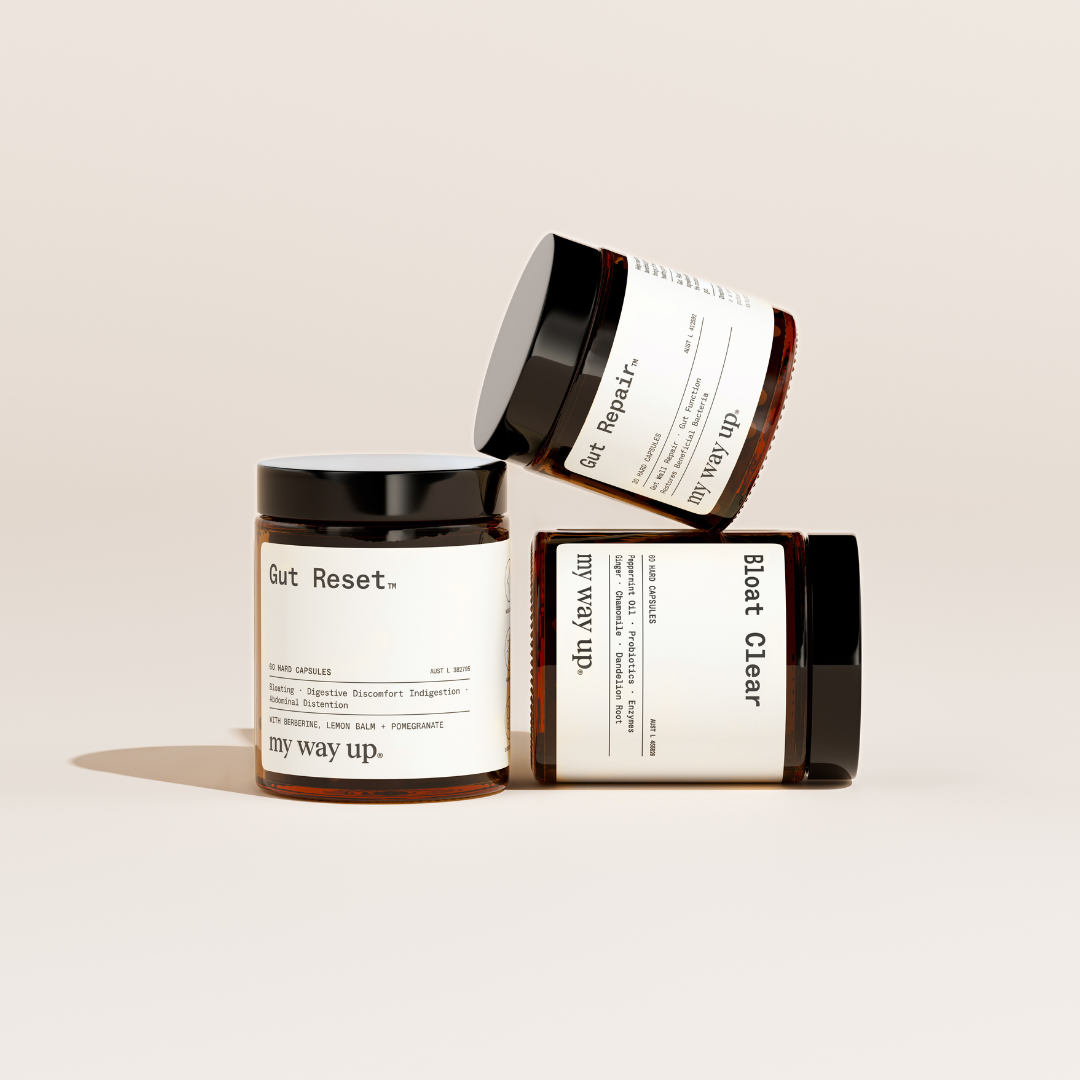With Easter right around the corner, it's the perfect time to indulge in everyone's favourite treat – chocolate! Chocolate is well-loved for its irresistible taste, luxurious texture, and mood-boosting properties. But did you know that beyond its dreamy flavour profile, chocolate offers a multitude of health benefits?
Specifically, chocolate is an excellent source of polyphenols (such as flavanols, procyanidins, and theobromine). Polyphenols are a category of organic compounds found naturally in plant foods. Polyphenols are renowned for their various health benefits, including their ability to support gut health.
Polyphenols offer antioxidant and anti-inflammatory effects. Within the gut, this includes promoting the growth of beneficial gut bacteria, reducing inflammation and strengthening the intestinal lining. Overall, this can help to support your digestive capacity and maintain a balanced gut microbiome.
With that in mind, let’s explore the types of chocolate that offer the highest concentration of polyphenols.
-
Dark Chocolate: When it comes to polyphenol content, dark chocolate reigns supreme. Rich in flavonoids, dark chocolate boasts a higher concentration of cocoa solids, translating to more health-boosting polyphenols per bite. Opt for varieties with at least 70% cocoa content to reap the maximum benefits. When choosing your chocolate, be sure to check your ingredients lists and nutrition panel - ideally sugar should not be the first listed ingredient - cacao should be!
-
Cacao Nibs: These crunchy, unprocessed bits of cacao beans are loaded with polyphenols. Incorporating cacao nibs into your Easter treats not only adds a delightful crunch but also provides a potent dose of gut-loving polyphenols. You could try sprinkling cacao nibs on yoghurt, adding them to a smoothie or using them in baking.
-
Raw Cacao Powder: Swap out conventional cocoa powder for raw cacao powder to elevate the polyphenol content of your Easter recipes. Note the difference in spelling; there is a distinction between cocoa and cacao. Raw cacao undergoes minimal processing, preserving its polyphenol content and delivering a rich, indulgent flavour profile. Again, this can be added to smoothies, stirred through yoghurt or used to make decadent hot chocolates.
- Polyphenol-Rich Additions: Get creative with your chocolate creations by incorporating other polyphenol-rich ingredients like nuts, berries, and spices. Think walnuts, almonds, goji berries, and cinnamon – all of which complement chocolate beautifully while enhancing its nutritional profile.
Amidst the Easter chocolate frenzy, moderation remains key - everything should be enjoyed in moderation. While dark chocolate offers a host of health benefits, excessive consumption can negate its positive effects. Aim for a square or two of high-quality dark chocolate per serve to savour the goodness whilst reaping the health benefits.
This Easter, indulge mindfully by choosing dark chocolate and polyphenol-rich additions to nourish your gut and excite your taste buds. Remember, wellness begins from within and every mouthful is an opportunity to nurture your mind and body.
Happy Easter, and may your celebrations be filled with joy, gratitude, and deliciously gut-friendly chocolate delights!
Chloe Louise
Mind-Gut Nutritionist
Innerform Health
Reference List
Lee, K., Kim, Y., Lee, H., & Lee, C. (2003). Cocoa has more phenolic phytochemicals and a higher antioxidant capacity than teas and red wine. Journal of Agricultural and Food Chemistry, 51(25), 7292-7295. https://doi.org/10.1021/jf0344385
Magrone, T., Russo, M., & Jirillo, E. (2017). Cocoa and dark chocolate polyphenols: from biology to clinical applications. Frontiers in Immunology, 8(677). https://doi.org/10.3389/fimmu.2017.00677
Massot-Cladera, M., Pérez-Berezo, T., Franch, A., Castell, M., & Pérez-Cano, F. (2012). Cocoa modulatory effect on rat faecal microbiota and colonic crosstalk. Archives of Biochemistry and Biophysics. 527(2), 105-112. https://doi.org/10.1016/j.abb.2012.07.013

